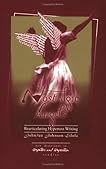 Nostalgic Angels: Rearticulating Hypertext Writing by Johndan Johnson-Eilola
Nostalgic Angels: Rearticulating Hypertext Writing by Johndan Johnson-Eilola
My rating: 5 of 5 stars
While the examples Johnson-Eilola uses in Nostalgic Angels to discuss hypertext are dated (e.g., the 1990s program HyperCard), his arguments seem to be just as salient today. Throughout the book, Johnson-Eilola complicates notions of hypertext, especial those claims that hypertext are utopian postmodern texts that decenter authorship, liberate readers, and create open democratic spaces.
J-E takes an ecological prospect, arguing that hypertext, like all computer technologies, “are ambivalent technologies, objects or concepts that can be used in various ways depending in part on the social conditions in which they are constructed and reconstructed in use” (23). He urges against viewing technologies as solely tools, as the tool perspective can lead users, teachers, and scholars “to forget the always-present technological forces” and to assume that tools simply help achieve predetermined goals (19). Another important aspect of J-E’s argument is that, following Terry Eagleton, if cultures admits its inadequacies (such as the inadequacies of print by allowing computer technologies to take hold), it might “tighten rather than loosen its grip” (23, qting. Eagleton).
Chapter 3 of Nostalgic Angels takes as its focus those “functional” hypertexts that many ignore when they make utopian claims about hypertext. Functional documents and technologies (like technical documents, how-to texts) are hard to analyze and critique for their politics because through their functionality, they obscure their context and politics (52). J-E shows how functional hypertexts often emulate print texts, focusing on efficiency (53, 63); valuing clarity to avoid “misinterpretations or misreadings”—a transmission model of communication (61, 66); and offering more choices than print but still and more powerfully restricting freedom (63). He concludes, “Hypertext, ten, integrates most successfully into the workplace not as a transformative (let alone disruptive) technology, but as a conservative process, a way of making progress in the drive toward increased technical efficiency,” noting as well that hypertexts fit well into post-Fordist logics, allowing for less time for reflection (79).
Chapter 4 explores how texts, intertextual relations, and information become spaces. According to J-E, “spatial articulations can take one of (at least) two forms—the commodity and the construction” (95). In this chapter, J-E discusses functional hypertexts, like databases, for how they are articulated as commodities and construct readers as consumers (103). While “text as information has long seemed spatial, [. . .:] hyperspace appears to expand and transform that space” (106), becoming a market where information “can be entered, browsed, and purchased” (107). J-E spends much of the chapter promoting a critical literacy, as opposed to a simple functional literacy, of hyperspaces, so that users can critique the ways in which information is presented, organized, mapped, and navigated (129). Central to his concerns are how information has become more commodified, in part because we articulate it as a space (like land, that can be bought and sold), and in part because of post-Fordist capitalist logics that privatize space (thus, less public support for hypertextual spaces and more privatization) (130-134).
Chapter 5 explores the articulation of hypertextual space as a construction, particularly the postmodern conception that hypertexts are liberating, fragmented, subversive, deconstruction, and so forth. He is concerned that “hypertext potentially engenders post-political activity” by naturalizing hypertext as inevitable and the way things should have been (or always have been) (171). He shows how hypertexts, though they might engender deconstruction, do not naturally create deconstruction, and often undercut deconstruction’s goals (160). Nor do they naturally decenter the author or put readers and authors on the same plane.
The last chapter turns to nostalgia, the desire in this case to want an image of the past, wherein “Hypertext here is, among other things, a code word for the innocence we sometimes assume marked human existence prior to print, an impossible Eden of pure knowledge and perfect communication unmarked by the ‘complications’ of technology” (176). While most of his book has been critical of hypertext and articulations of hypertext, J-E turns to rearticulating hypertext “for increasing access to information for both our students and ourselves, for rethinking boundaries between discourses” (186).
I wish I had read this book a few years ago—when Lisa Ede first suggested it to me my first term at Oregon State. I was very interested in hypertext at the time—in fact, in many ways, my vague interest in that time led to a more focused interest in blogs for my master’s thesis. This book could have been helpful in understanding articulations of the Internet as liberatory. But I’m glad I’ve read this now.

